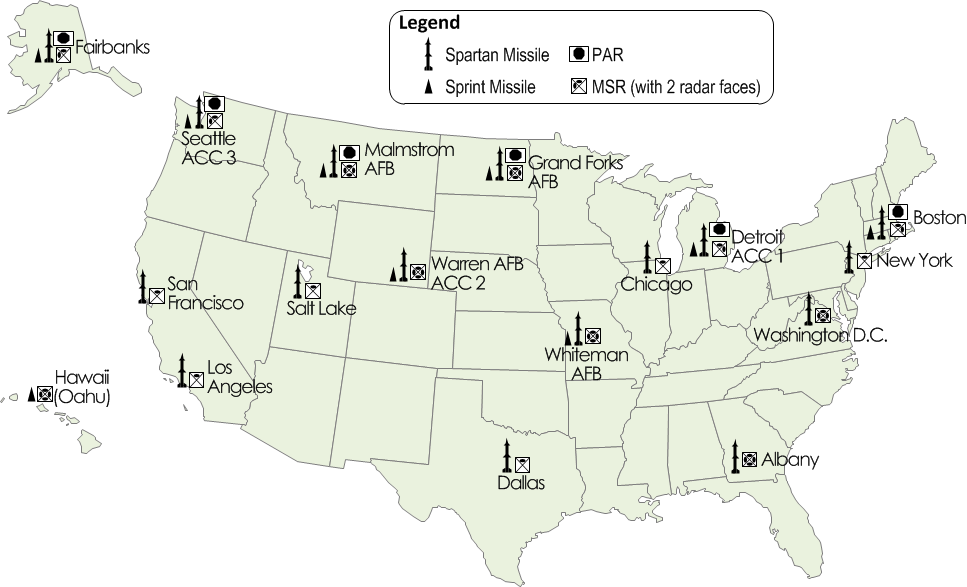Defence Secretary McNamara announced on 18th September 1967 plans for the Sentinel ABM defence system. This replaced the Nike X system and changed its focus from a general US defence to one of protecting against Chinese missile attack. At the time the Chinese were exploding nuclear devices and it was felt that they would have an ICBM capability around 1970.
There were a number of reasons for the US to switch to a Chinese threat. It allowed them to continue talks with the Soviets about arms reduction as the ABM system was essentially now non-threatening to the Soviets. Also, in handling a Chinese threat it also presented a fewer number of targets that the ABM system was required to intercept when compared to a Soviet attack and also, it provided defence against a rogue missile launching either from the Soviets or Chinese or anyone else who decided to launch a missile to the US. Thus it helped arm reduction talks as well as reducing the size and complexity of the system.
Even so, Sentinel was still a wide ranging system which consisted of a
number of PARs across the northern boundary of the US as well as Alaska.
MSRs were also located in numerous locations with different number of radar faces
in the US as well as in Alaska
and Hawaii, with both Spartan (which was the name given to the Nike-EX
missile) and Sprint missiles. The Hawaiian installation was the only
site that did not have any Spartan missiles. The entire system had an
estimated price tag of $5 billion which did not include R&D or
operation and maintenance costs.

Sentinel Proposed Deployment
Opposition for the ABM was gradually increasing within the US. Vietnam was in full swing and was diverting a lot of funds from other projects and also increasing public opinion away from military projects. Late in 1968 (just as Nixon was elected President), public demonstrations in Seattle, Chicago and Boston about the deployment of nuclear missiles in their back yards started with earnest. An Army community relations meeting was held in Boston on January 29, 1969, where opponents to Sentinel were able to voice their concerns. As a result, Senator Edward Kennedy wrote a letter to the Defence Secretary Melvin Laird questioning the value of Sentinel. As a result of these demonstrations and meetings, construction at the Sharpner's Road site near Boston was halted.
In February 1969 President Nixon suspended Sentinel and ordered a review of the program. Barely a month later, it's deployment was redesigned and after being alive for only 18 months, Sentinel was declared dead and it was replaced with a new deployment which was called Safeguard.
Last Modified:28-Jan-2012